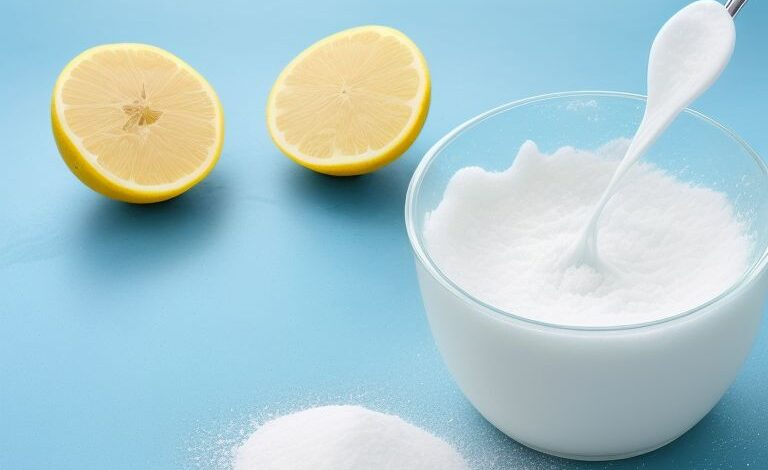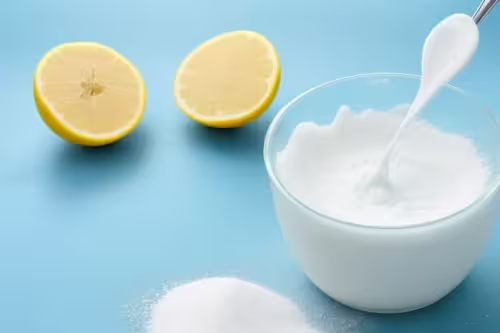7 Powerful Ways to Whiten Teeth with Baking Soda (Backed by Science)

Do you want a brighter, more dazzling smile without breaking the bank? Whitening your teeth with baking soda might just be the answer! This simple, natural remedy is known for its ability to remove stains and polish teeth, giving you a beautiful, healthy smile. But how does it work? Is it safe? And what’s the best way to use it? Let’s dive into the science and methods to whiten your teeth with baking soda.

What Is Baking Soda and How Does It Whiten Teeth?
Baking soda, or sodium bicarbonate, is a fine white powder known for its alkalinity and mild abrasive properties. These two key characteristics make it an excellent natural cleaner, not just for your home but for your teeth too! Here’s how baking soda works for teeth whitening:
- Abrasive Action: Baking soda’s fine texture gently scrubs away surface stains on your teeth caused by food, drinks, and smoking.
- Neutralizes Acids: The alkaline nature of baking soda helps neutralize acids in the mouth, preventing tooth decay and reducing yellowing over time.
- Bacterial Reduction: Baking soda has mild antibacterial properties that can help prevent plaque buildup, keeping your teeth cleaner for longer.
However, while baking soda can effectively brighten your smile, it’s essential to know how to use it correctly to avoid damaging your enamel.
1. The Classic: Baking Soda and Water Paste
The most basic method for using baking soda to whiten your teeth is to make a simple paste with water.
What You’ll Need:
- 1 teaspoon of baking soda
- A few drops of water
Instructions:
- Mix the baking soda with a small amount of water to form a thick paste.
- Apply the paste to your toothbrush and gently brush your teeth in circular motions for 2 minutes.
- Rinse thoroughly with water.
Why It Works: This method helps remove surface stains, and the gentle scrubbing action of baking soda polishes the enamel, making your teeth appear whiter.
Tip: Limit this method to 2-3 times a week to prevent enamel erosion.
2. Baking Soda and Hydrogen Peroxide Combo
For an even more powerful whitening treatment, combine baking soda with hydrogen peroxide. Hydrogen peroxide is a bleaching agent that enhances the whitening effects of baking soda.
What You’ll Need:
- 1 teaspoon of baking soda
- 1 teaspoon of hydrogen peroxide (3% solution)
Instructions:
- Mix the baking soda and hydrogen peroxide into a smooth paste.
- Apply the paste to your teeth and brush for 2 minutes.
- Rinse thoroughly with water.
Why It Works: Hydrogen peroxide breaks down stains and disinfects the mouth, while baking soda scrubs the teeth, making this combo a powerhouse for teeth whitening.
Safety Tip: Use this method no more than once a week to avoid overuse, which could irritate your gums or weaken your enamel.
3. Baking Soda and Lemon Juice Paste
Lemon juice, a natural bleaching agent, can boost the whitening power of baking soda. However, be cautious with this method due to lemon’s acidity.
What You’ll Need:
- 1 teaspoon of baking soda
- A few drops of fresh lemon juice
Instructions:
- Mix the baking soda with a few drops of lemon juice to create a paste.
- Apply the paste to your teeth and gently brush for 1-2 minutes.
- Rinse thoroughly with water.
Why It Works: The combination of the mildly abrasive baking soda and the acidic lemon juice helps to break down tough stains, particularly from coffee, wine, and tobacco.
Safety Tip: Use this method sparingly—no more than once every two weeks—as the acidity of lemon can erode tooth enamel if overused.
4. Baking Soda and Toothpaste Mixture
If you’re looking for an easy way to add baking soda to your daily routine, mixing it with your regular toothpaste is a simple and effective solution.
What You’ll Need:
- Your regular toothpaste
- 1 teaspoon of baking soda
Instructions:
- Squeeze a pea-sized amount of toothpaste onto your toothbrush.
- Dip the toothpaste into baking soda, coating it lightly.
- Brush your teeth as usual for 2 minutes.
- Rinse thoroughly with water.
Why It Works: By combining baking soda with fluoride toothpaste, you get the whitening power of baking soda while still protecting your teeth from cavities.
Tip: You can use this method daily since the added fluoride helps strengthen your enamel.
5. Coconut Oil and Baking Soda for a Natural Whitening Boost
Coconut oil pulling has been a traditional oral health remedy for centuries. When combined with baking soda, it provides a gentle, effective whitening treatment.
What You’ll Need:
- 1 teaspoon of baking soda
- 1 tablespoon of coconut oil
Instructions:
- Mix the baking soda and coconut oil to form a paste.
- Apply the paste to your toothbrush and brush for 2 minutes.
- Rinse your mouth with warm water.
Why It Works: Coconut oil has antimicrobial properties that can reduce harmful bacteria in the mouth, while baking soda gently removes stains. Together, they leave your teeth whiter and your mouth feeling fresh.
Tip: Coconut oil is gentle, so you can use this method several times a week without worrying about damaging your enamel.
6. Baking Soda and Apple Cider Vinegar
Apple cider vinegar is known for its powerful cleansing properties and can be used alongside baking soda for an effective whitening solution.
What You’ll Need:
- 1 teaspoon of baking soda
- 1 teaspoon of apple cider vinegar
Instructions:
- Mix the baking soda and apple cider vinegar to create a paste.
- Brush your teeth with the paste for 1-2 minutes.
- Rinse thoroughly with water.
Why It Works: Apple cider vinegar breaks down stains on the surface of your teeth, while baking soda gently scrubs them away.
Safety Tip: Use this method sparingly, about once a week, as the acidity of apple cider vinegar can wear down your enamel if overused.
7. Baking Soda Mouth Rinse
For a quick and easy way to whiten your teeth, try using baking soda as a mouth rinse.
What You’ll Need:
- 1 teaspoon of baking soda
- 1 cup of water
Instructions:
- Dissolve the baking soda in water.
- Swish the solution around your mouth for 30 seconds to 1 minute.
- Spit it out and rinse with water.
Why It Works: The rinse helps neutralize acids in your mouth and reduces stains over time, leaving your teeth looking cleaner and brighter.
Tip: This method is gentle enough to use daily as part of your oral hygiene routine.
Is Baking Soda Safe for Teeth Whitening?
Baking soda is generally safe to use for teeth whitening when used in moderation. However, it’s essential to keep the following points in mind:
- Enamel Protection: While baking soda is a mild abrasive, overuse can wear down enamel over time, making your teeth more sensitive and prone to cavities. Limit use to a few times a week.
- Consult Your Dentist: If you have sensitive teeth, gum disease, or any dental issues, consult your dentist before using baking soda for teeth whitening.
- Avoid Using Straight Baking Soda: Always mix baking soda with a liquid or toothpaste to minimize its abrasive effects on enamel.
The Benefits of Using Baking Soda for Teeth Whitening
Why choose baking soda over expensive store-bought whitening products? Here are some key benefits:
- Cost-Effective: Baking soda is much cheaper than commercial whitening treatments.
- Natural Ingredients: Baking soda is a natural product, making it an excellent choice for those looking to avoid chemicals found in many whitening products.
- At-Home Convenience: You can use baking soda for teeth whitening right from the comfort of your home, without needing to visit the dentist.
Final Thoughts: Achieve a Brighter Smile Naturally
Using baking soda to whiten your teeth is a simple, affordable, and effective way to remove stains and improve your smile. Whether you opt for a baking soda paste, a combination with other natural ingredients, or a mouth rinse, remember to use these methods in moderation to protect your enamel. For best results, incorporate these treatments into your oral hygiene routine a few times a week, and always follow up with regular brushing and flossing.